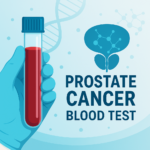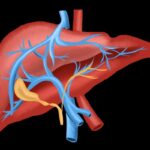How Bisphenol A (BPA) interferes with our epigenetic programming
Most of us are familiar with disorders such as diabetes, obesity, and metabolic syndrome. At first glance, we think that we really know what may cause these syndromes – some are hereditary, others are supposedly caused by the wrong lifestyle. At present, the scientists are beginning to realize that the source of problems with metabolism is significantly more complex. Metabolic issues in some people lie in their distant past – namely, in the experiences of their pregnant parents and even grandparents, or during their first days as newborns. Those early experiences interfere with the tricky programming of our genes by changing epigenetic marks. A new study carried out by specialists at the Baylor College Of Medicine, Houston, adds a new piece to the puzzle.
Throughout history, pregnant women and new mothers were told to take utmost care of their lifestyles. They should eat healthily, avoid alcohol, and beware of a number of infections. These first 9 months are crucial for the development of a healthy baby. Still, there are circumstances under which future or new mothers cannot avoid stress, such as times of war, or financial difficulties. Yet even in these situations, severe changes in diet may not produce visible changes in a newborn. Only with time as the baby develops into an adult one may realize that these times of hardship have long – term consequences. This happens because the periods of stress influence the complicated mechanisms responsible for the body to process, store, and eliminate the nutrients it receives. This network of processes is called metabolism.
Recent studies of people that descended from the victims of Dutch Hunger Winter of 1944-1945 or artificial hunger (Holodomor) in Ukraine have shown that the people born to people living in the areas affected by famine are more likely to develop diabetes type 2 later in life. It was also discovered that this association may be due to the epigenetic changes that take place on the genes of the affected people.
Basically, when a pregnant mother experiences extreme stress, such as severe hunger, it affects a group of important regulatory proteins in the cells of the developing baby. These proteins are responsible for placing special marks on certain areas either in the proteins that surround our DNA or in the DNA regions themselves. These marks are called epigenetic marks and are basically a control code above the code. They tell which genes should be working, and which genes should not. In case of the babies that are born to mothers who have suffered from severe hunger, the presence of the new marks placed on their genes makes them susceptible to overeating, storing more nutrients even if there is no emergency, and eventually leads to development of diabetes or obesity.
Most likely, this mechanism is adaptive supposed to protect the children from the adverse consequences of hunger and lack of food – unfortunately, in the times of food abundance, it may have opposite effects and endanger one’s health. Sometimes, other factors, such as premature birth or low birth weight can lead to similar changes.
The mechanisms of inheritance of the propensity to develop metabolic diseases through epigenetic changes are extensively studied. New data, triggers another question – is the severe hunger the only factor that may trigger the reprogramming of genes in the developing organism and its reaction to diet in adulthood? Or are there other factors that may have equally adverse influence?
In fact, there are certain compounds that are known to influence both the normal workings of our body and the so-called epigenetic machinery in our cells. These chemicals are called endocrine disrupting compounds, or EDC. There is a large number of known EDCs: components of plastic, chemical solvents, pesticides and fungicides. Initially, it was discovered that these chemicals could interfere with multiple processes:
female and male sexual developmentthey increase the risk for breast and prostate cancer,they disrupt the function of the thyroid gland,these substances can cause obesity.
Later, it was discovered that they can influence the epigenetic control of our genes. As the attachment of the epigenetic marks to chromosome proteins and genes depends on specialized enzymes, the EDC can interfere with the activity of these proteins in multiple ways. For example, they can decrease the amount of chemicals the enzymes can work with, or they influence the proteins that control the chemical reactions themselves. There are certain time points when our cells are particularly vulnerable to those toxic compounds. These periods include:
during embryonic development inside the womb,the period right after birth,the period when the future egg cells and sperm cells form.
One of the most famous EDC compounds is bisphenol A, or BPA. This compound can have multiple detrimental effects on various parts of the body: the brain, normal development of the future baby, and sensitivity to insulin, among the known side effects. Previously, BPA was used in production of baby bottles, which is why responsible companies do their best to reassure the customers that the new bottles do not contain this substance.
In order to better understand the influence of BPA on the body, a group of scientists under Dr. Lindsey Treviño from the Baylor College of Medicine, Houston, Texas, examined the influence of BPA on the epigenetic changes in the liver of newborn rats and the long – term effects of such changes into adulthood. To achieve this aim, the scientists have chosen rats as model animals.
In course of the experiment, BPA dissolved in sesame oil was given to young rats in the period of 1-3 days right after birth. Some rats were given sesame oil only and were used as controls. The period chosen for the experiment was important because of the changes in the development of the liver in these animals.
Liver has multiple crucial functions in the body. For the researchers, the ability of the liver to regulate the storage and breakdown of sugars and fats was the most important for their particular study. In the first few days after birth, the liver switches from being an organ that contains cells used for production of blood cells to an organ that plays a crucial role in digestion and storage of nutrients. This means that the genes in the liver cells undergo an extensive superficial “remodeling” of the epigenetic code. Some genes get “locked down” by the epigenetic marks, while others get “opened up”; introducing BPA during this period can change this process considerably.
When the researchers examined liver cells from the rats given BPA soon after birth, they discovered that the introduction of this endocrine disrupting chemical has greatly influenced the type of epigenetic marks in chromosome proteins and genes. Usually, the epigenetic marks in the liver are changed several times in course of the animal development, until a certain adult pattern is established when the young rat reaches maturity. The BPA has led to a situation when the cells now contained marks that were usually present in adult animals. At the same time, rats given sesame oil only did not have “aged” liver cells. Basically, in the animals given BPA, the process of epigenetic programming has jumped through several stages of development because of the disruption that the compound has caused. Nevertheless, at this point in time no other damage was visible in the newborn rats. Neither their weight nor their biochemical balance was changed at that point.
After raising both groups of rats for two months in normal conditions, the researchers switched the animals to a new diet. This so-called Western diet – includes high levels of sugars and fats. The diet has influenced the well-being of the rats exposed to BPA significantly: the livers of the animals increased in size (which is often a sign of disease or damage), and a disbalance of fat content in the blood was noted. Interestingly, the male rats were more affected by these changes than the females.
When the cells from those animals were analyzed with the help of the method called chromatin immunoprecipitation method (CHiP), it was found that certain genes had significantly more epigenetic marks of a certain type in genes responsible for:
Processing cholesterol, a compound increased in cardiac disorders and obesity;Maintaining the balance of fatsBreaking up foreign substancesReaction to hormones
One of the most affected genes was EGR1, or early growth response factor. This gene produces a protein that controls the development of multiple cells in the body. It is also activated when the body is stressed. EGR1 is also important in liver development. Without normal activity of EGR1, the liver cannot work properly either and cannot regenerate in case of injury.
The presence of BPA has changed the quantity of certain type of epigenetic marks, especially in EGR1 and other genes that are controlled by this gene. As a result, when the rats were fed Western diet, the amount of EGR1 was unusually increased – the gene reacted as if the body was in stress, which triggered multiple changes in the all the body processes. This has led to changes in the liver itself, and in the amount of sugars and fats in the blood. Such conditions made the likelihood of the adult rats developing obesity or similar disorders higher.
This study has shown how one toxic chemical, even in small quantity and during a short, crucial time period, can greatly influence the future of one’s health in the long run through changes in epigenetic programming. Other EDC substances probably could have a similar effect. This implies that we need to understand how outside influences can change the control of our genes and how we can evaluate the potential damage done by those factors. Thankfully, in some cases epigenetic aging is reversible to some extent, which can give both the scientists and the patients a measure of control.
Literature
Mericq, V. et al. [January 2017]. Long-term metabolic risk among children born premature or small for gestational age. Nat. Rev. Endocrinol., V. 13, №1, pp. 50-62.Sales, V. M., A. C. Ferguson-Smith and M. – E. Patti [March 7, 2017]. Epigenetic Mechanisms of Transmission of Metabolic Disease Across Generations. Cell. Metabol. , V. 25, №3, pp. 559-571Walker, C. L. [August, 2016]. Minireview: Epigenomic Plasticity and Vulnerability to EDC Exposures. Mol. Endocrinol., V. 30, № 8, pp. 848-55. Retrieved October 24, 2020 from: https://pubmed.ncbi.nlm.nih.gov/27355193/ Bisphenol A. National Institute of Environmental Health Sciences. Niehs.nih. org. Retrieved October, 24, 2020 from: https://www.niehs.nih.gov/health/topics/agents/sya-bpa/index.cfmBansal, R. and R. T. Zeller. [August 2019]. Clarity-BPA: B isphenol A or Propylthiouracil on Thyroid Function and Effects in the Developing Male and Female Rat Brain. Endocrinology, V. 160, Issue 8, pp.1771-1785Jing, J. et al. [December. 2019]. Gestational Exposure to Bisphenol A and Bisphenol S Leads to Fetal Skeletal Muscle Hypertrophy Independent of Sex. Toxicol. Sci., V. 172, № 2, pp. 292-302.Puttabyatappa, M. et al. [April, 2019] Developmental programming: Changes in mediators of insulin sensitivity in prenatal bisphenol A-treated female sheep. Reprod. Toxicol., pp. 110-122. Retrieved October 24, 2020 from: https://pubmed.ncbi.nlm.nih.gov/30853570/Giancotti, A. et al. [August, 2019]. Functions and the Emerging Role of the Foetal Liver into Regenerative Medicine. Cells, V. 8, № 8, p. 914. Retrieved October 24, 2020 from: https://www.ncbi.nlm.nih.gov/pmc/articles/PMC6721721/Kinoshita, T. et al. [Jun 22, 1999]. Hepatic differentiation induced by oncostatin M attenuates fetal liver hematopoiesis. Proc. Natl. Acad. Sci., V. 96, №13, pp. 7265-70. Retrieved October 24, 2020 from: https://pubmed.ncbi.nlm.nih.gov/10377403/Milne, T.A, K. Zhao, J. L. Hess [Sep 8, 2014]. Chromatin Immunoprecipitation (ChIP) for Analysis of Histone Modifications and Chromatin-Associated Proteins. Methods Mol. Biol. 2009, V.538, pp. 409-423. Retrieved October 24, 2020 from: https://www.ncbi.nlm.nih.gov/pmc/articles/PMC4157307/Lee, Y.-H. [January 2014]. EGR1 (Early Growth Response). Atlas Of Genetics and Cytogenetics in Oncology and Haematology. Retrieved October 24, 2020 from: https://www.ncbi.nlm.nih.gov/pmc/articles/PMC4157307/Enlarged liver. Mayo Clinic. Retrieved October 24, 2020 from: https://www.mayoclinic.org/diseases-conditions/enlarged-liver/symptoms-causes/syc-20372167#:~:text=An%20enlarged%20liver%20is%20one,the%20cause%20of%20the%20condition.Magee, N. and Y. Jang [2017]. Role of early growth response 1 in liver metabolism and liver cancer. Hepatoma Res., V. 3, pp. 267-277. Retrieved October 24, 2020 from: https://pubmed.ncbi.nlm.nih.gov/29607419/
Recent Blog Posts
-
 13 Jun 2025MTL Epitherapeutics and RI-MUHC Develop Early Prostate Cancer Blood Test
13 Jun 2025MTL Epitherapeutics and RI-MUHC Develop Early Prostate Cancer Blood Test -
 11 Jan 2025EpiAge Research Publication Signals a New Era in Understanding Biological Aging
11 Jan 2025EpiAge Research Publication Signals a New Era in Understanding Biological Aging -
 18 Nov 2024EpiMedtech Global Announces FDA Registration of EPIAGE, the First Epigenetic Age Test Registered by the FDA
18 Nov 2024EpiMedtech Global Announces FDA Registration of EPIAGE, the First Epigenetic Age Test Registered by the FDA -
 18 Nov 2024EpiMedTech Global Validates Unique epiCervix HPV Combo Test for Cervical Cancer Detection
18 Nov 2024EpiMedTech Global Validates Unique epiCervix HPV Combo Test for Cervical Cancer Detection -
 31 Oct 2024HKG epiTherapeutics’ MetaGen Genetic Risk Assessment Test Receives FDA Registration, Now Available in the U.S.
31 Oct 2024HKG epiTherapeutics’ MetaGen Genetic Risk Assessment Test Receives FDA Registration, Now Available in the U.S. -
 31 Oct 2024EpiMedTech Global Launches epiGeneComplete: A Breakthrough Genetic and Epigenetic Test for Comprehensive Health Diagnostics
31 Oct 2024EpiMedTech Global Launches epiGeneComplete: A Breakthrough Genetic and Epigenetic Test for Comprehensive Health Diagnostics -
 30 Oct 2024Enhanced Early Detection of Liver Cancer
30 Oct 2024Enhanced Early Detection of Liver Cancer -
 08 Oct 2024Are Microarrays Still Reliable? How Next-Generation Sequencing Outperforms Traditional Methods
08 Oct 2024Are Microarrays Still Reliable? How Next-Generation Sequencing Outperforms Traditional Methods



